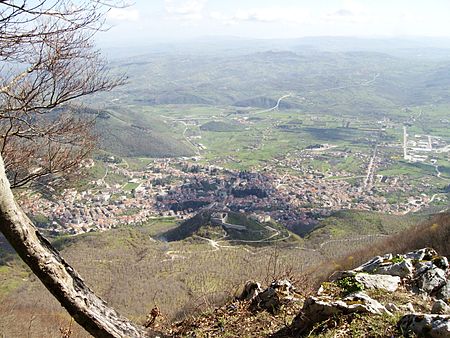Campania is an administrative region of Italy; most of it is in the south-western portion of the Italian peninsula (with the Tyrrhenian Sea to its west), but it also includes the small Phlegraean Islands and the island of Capri. The capital of the Campania region is Naples. As of 2018, the region had a population of around 5,820,000 people, making it Italy's third most populous region, and, with an area of 13,590 km2 (5,247 sq mi), its most densely populated region. Based on its GDP, Campania is also the most economically productive region in southern Italy and the 7th most productive in the whole country. Naples' urban area, which is in Campania, is the eighth most populous in the European Union. The region is home to 10 of the 58 UNESCO sites in Italy, including Pompeii and Herculaneum, the Royal Palace of Caserta, the Amalfi Coast and the Historic Centre of Naples. In addition, Campania's Mount Vesuvius is part of the UNESCO World Network of Biosphere Reserves.The Campania's hinterland was inhabited from the beginning of the 1st millennium BC by the Osci, Samnites and Etruscans, while between the 8th and 7th centuries BC its coastal areas were colonised by the ancient Greeks (Magna Graecia). At that time, Capua was Campania's leading city, while Naples was an anomaly, being predominantly Greek-speaking.Campania is rich in culture, especially with regard to food, music, architecture, and archaeological and ancient sites—such as Pompeii, Herculaneum, Oplontis, Paestum, Aeclanum, Stabiae, and Velia. The name "Campania" is derived from Latin; the Romans knew the region as Campania felix ("fertile countryside" or "happy countryside"). The rich natural beauty of Campania makes it important to the tourism industry: the city of Naples, the Amalfi Coast, Mount Vesuvius, and the islands of Capri and Ischia have long been major attractions.








